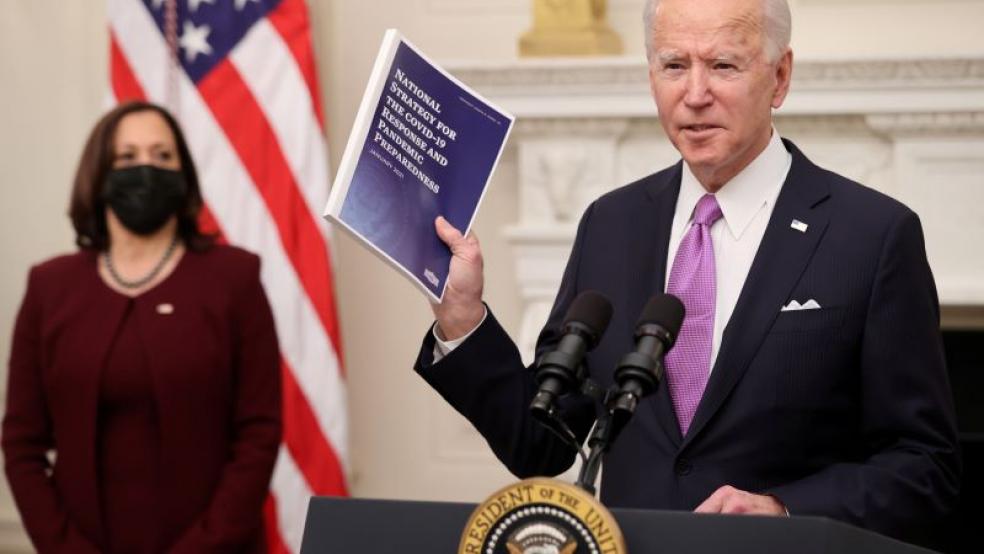As President Biden pushes for his $1.9 trillion rescue package and the $1,400 payments it calls for, a new analysis by the Penn Wharton Budget Model estimates that the president’s full plan would boost GDP by 0.6% this year — much lower than some other analyses have found — and that the relief checks would largely be saved rather than spent.
The Penn Wharton report also says that the additional public debt incurred under Biden’s plan would reduce GDP by 0.2% next year and by 0.3% in 2040.
The analysis estimates that nearly all of the bottom 80% of households by income would get aid under the Biden plan, with the bottom 40% getting an average of more than $3,000. But the model finds that 73% of the $1,400 relief payments will go straight into household savings, with just 27% spent, minimizing any stimulus from those “stimulus checks.”
White House Press Secretary Jen Psaki said the new Penn Wharton analysis was “way out of step” with most studies of Biden’s plan. “The analysis concludes that our economy is near capacity, which would be news to the millions of Americans who are out of work or facing reduced hours and reduced paychecks,” Psaki said. “So this starting place means their model is way off.”
The White House has been touting analyses from the Brookings Institution, Moody’s Analytics and J.P. Morgan, all of which have found that Biden’s plan would provide a much larger economic jolt.
The Brookings analysis, for example, found that Biden’s proposed package would boost GDP by nearly 4% as of the end of this year and 2% at the end of 2022. Moody’s economists said Biden’s plan would raise real GDP growth to nearly 8% this year and almost 4% in 2022, nearly restoring full employment by fall of next year. An analysis from S&P Global earlier this week said that Biden’s plan would restore the economy to pre-pandemic levels by summer and bring unemployment below 4% by the middle of 2023, a year earlier than it currently projects.
GOP plan wouldn’t return economy to pre-pandemic levels, Brookings study says: A new analysis by Brookings’ Wendy Edelberg and Louise Sheiner finds that the $618 billion Senate Republican proposal would boost the economy somewhat but still leave it below its pre-pandemic path through the end of next year.
The study estimates that the GOP plan would raise GDP by 1.6% in the fourth quarter of 2021 and by 0.8% in the fourth quarter of 2022. "This would leave GDP about 0.8 percent below its pre-pandemic trajectory at the end of both 2021 and 2022," the authors say.
Biden’s plan, they write, would raise GDP by 3.6% at the end of 2021 and 2.1% at the end of 2022, lifting economic growth above its pre-pandemic path. The authors say that the faster growth “would likely put upward pressure on inflation, which the Federal Reserve has said would be welcome.” At the same time, a temporary economic surge could also create the risk of “a difficult economic period after 2021.”





